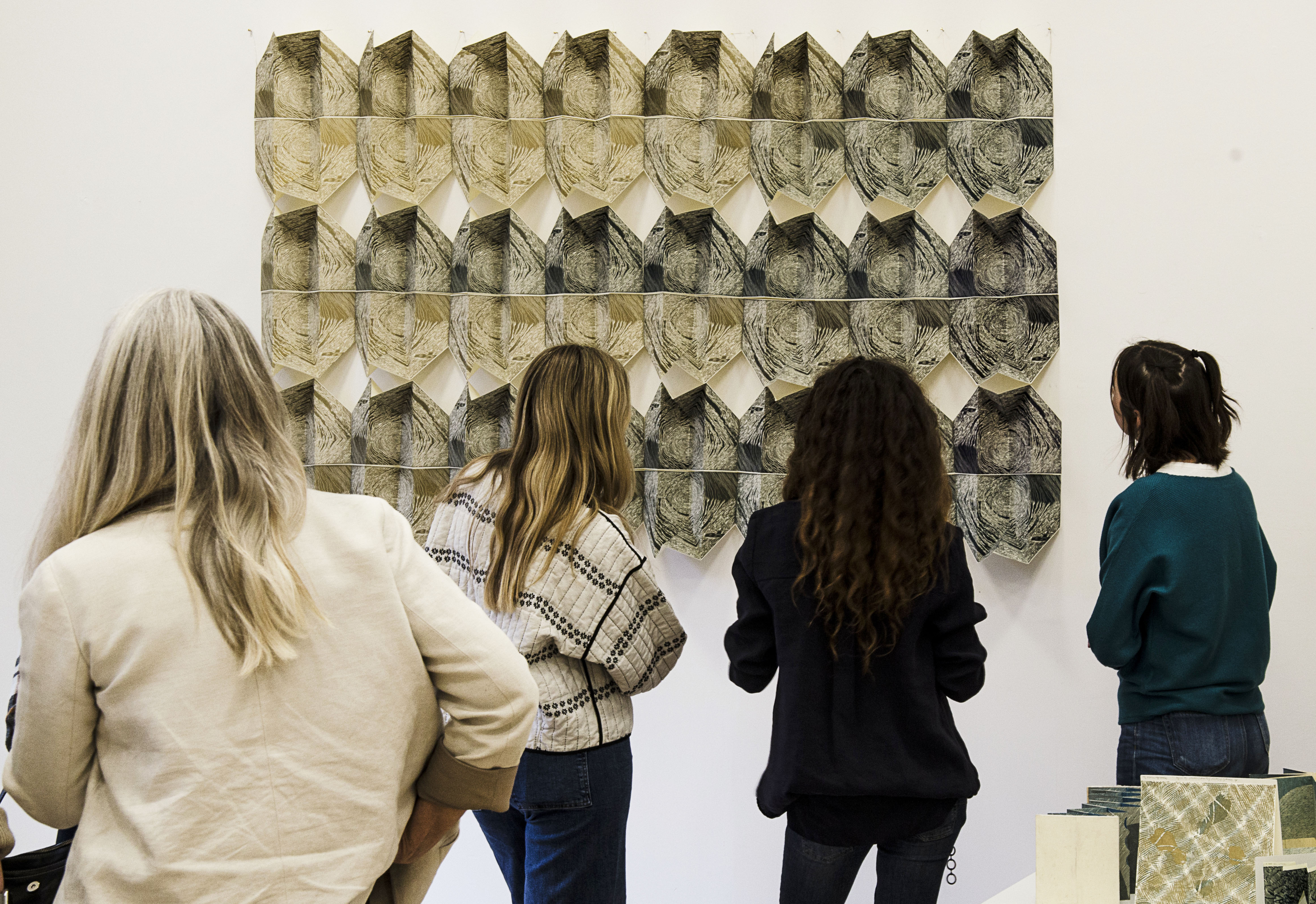Reveal
Susanna Doccioli
3.11.2023 4m2 Gallery – JCU, Rome
Mi ha sempre colpito come nella parola ri-velare ci sia implicita l’idea di nascondere.
“Ri-velare” come dire: rimettere il velo…anche se in realtà è sinonimo di “svelare” che significa anche “scoprire”. Mi immagino per un attimo lasciare trapelare un segreto, un’intuizione, per poi oscurarla.
Ci sono cose che non riusciamo a capire, a raccontare o a rappresentare, eppure a volte riusciamo in qualche modo a percepirle, o a laciare che trapelino attraverso i nostri gesti, il nostro essere, in modo più o meno conscio.
I’ve always been struck by how the word re-veil implies the idea of hiding.
“Re-veil” as if to say: put the veil back…even if in reality it is synonymous with “unveil” which also means “discover”. I imagine myself for a moment letting out a secret, an intuition, and then obscuring it.
There are things that we cannot understand, describe or represent, yet sometimes we manage to perceive them in some way, or let them shine through our gestures, our being, in a more or less conscious way.
Penso che i tagli e le pieghe nei miei lavori vogliano essere questo spiraglio che mostri il vuoto, che non è mai vuoto, come l’assenza, che può essere presenza ancora più forte.
I think that the cuts and folds in my works are intended to be this glimpse that shows the void, which is never empty, like absence, which can be an even stronger presence.
Cercando di raccontare il mio punto di vista guardando al mio lavoro, mi sono resa conto che negli anni staccarmi dal disegno figurativo, per avvicinarmi alla linea astratta, alla costruzione geometrica e alla cartotecnica è stato un modo per raccontare di più di quanto non riuscissi con la forma figurativa. Che finisce dove finisce il racconto visivo senza lasciare troppo spazio a immaginazione e “lettura”. Mentre in questo mondo dove posso muovermi con segno colore e forma posso dire tantissime cose anche senza “svelarle” mentre altre sembrano quasi venire fuori da sole, tra le pieghe, nei tagli, nei vuoti.
I realized over the years, I had to move away from figurative drawing to tell my point of view. By looking at my work, I decided to use abstract lines, geometric construction, and papermaking to tell more than what I could with the figurative form. The visual story and figurative form limit the room for imagination and “reading.” In this new world I can move with sign, color, and shape and express even without “revealing” them. Between the folds, in the cuts, through the voids; the story seems to come out on its own.
Anche nella tecnica dell’incisione stessa che prediligo, la xilografia (o lineoleografia), c’è intrinseco un importante concetto di base: il segno che produco con lo strumento da intaglio, è quello che in stampa viene fuori bianco (vuoto).
Letteralmente lavoro togliendo, scavando via dal tutto.
Il secondo concetto di base per me importante è il tempo e la ripetizione.
L’incisione e la stampa anticamente nascono proprio per questo: dedicare tanto tempo all’incisione della matrice per renderne più veloce la riproducibilità.
Nei miei lavori la ripetizione è già nel lavoro stesso. Del segno e della matrice stessa, delle stampe multiple, sovrapposizioni e ripetizioni modulari.
Il tempo di incisione e di progettazione, lascia spazio, in fase di stampa, all’istinto.
Nei monotipi ad esempio pur partendo da un modulo ripetuto, lascio il segno esprimersi liberamente, in un tempo di stampa determinato che di solito è di circa 2 ore.
My preferred engraving technique, xylography (or linocut), contains a direct yet crucial concept; the sign that I produce with the carving tool is the one that comes out white (empty) in print.
I literally work by removing, digging away from the material.
The second basic concept that is important to me is time and repetition.
In ancient times, engraving and printing were born precisely for this reason – dedicating a lot of time to engraving the matrix to make its reproduction faster.
In my works, the repetition is already in the work itself – on the sign and matrix itself, of multiple prints, overlapping and modular repetitions.
The engraving and planning time during the printing phase leaves space for instinct.
In monotypes for example, although I start from a repeated module, I let the sign express itself freely, in a specific printing time which is usually around 2 hours.
“Since I discovered a passion for printmaking, it has become clear to me just how much the print’s support is decisive. Choosing paper, cutting it, and folding into a particular shape echo my visual idea and my work on the matrix. As in Bruno Munari’s travel sculptures or children’s pop-up books, the playful and the unexpected are infused with poetry. In my work, the sheet of paper becomes a tree-dimensional theater in which a number of elements–marks, colors, transparences, fold, cuts, and seams–are the ”characters” that communicate a narrative even when the mark is not figurative.”
Susanna Doccioli
(Sara Linford e Devin Kovach, Forced Fiels, Palombi Editore, 2020)

